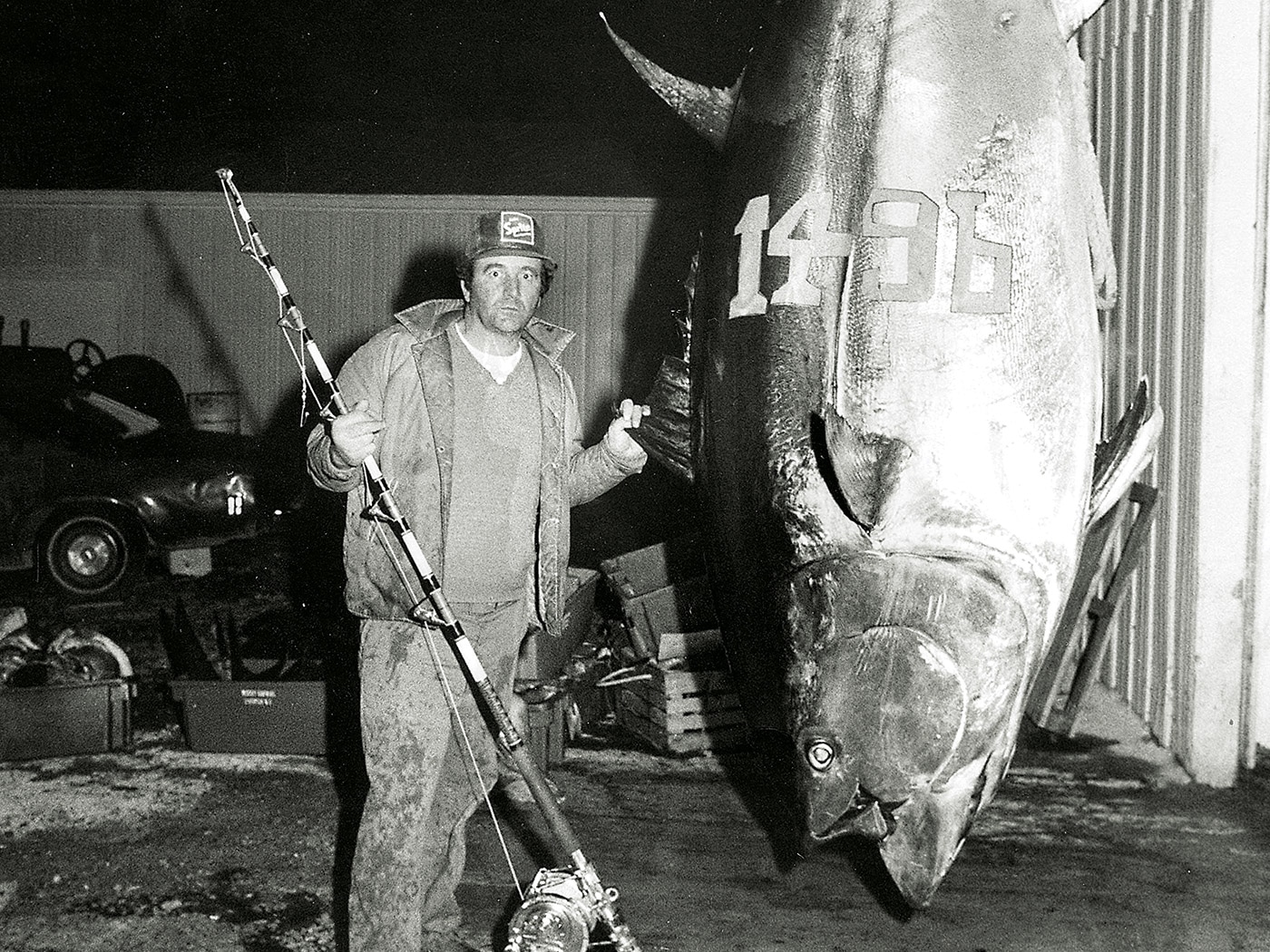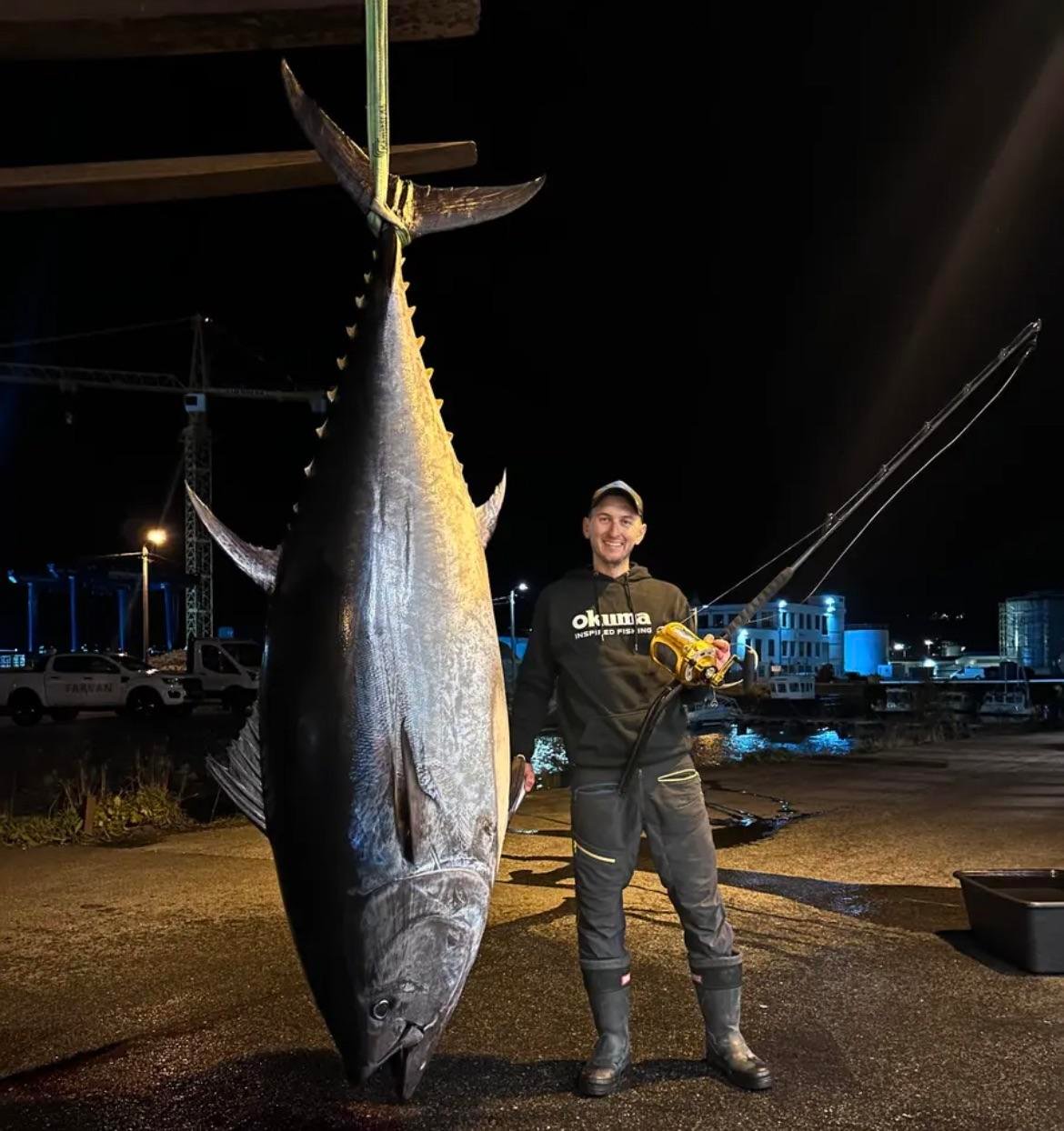The largest tuna ever caught was a bluefin weighing 1,496 pounds. It was caught off Nova Scotia in 1979.
Tuna fishing captivates anglers worldwide due to the challenge and excitement it offers. The bluefin tuna, particularly, stands out because of its massive size and strength. These fish are not only prized for their size but also for their value in the sushi market.
Anglers venture into deep waters, hoping to catch these giants. The largest recorded bluefin tuna highlights the thrill and potential rewards of tuna fishing. As interest in sustainable fishing grows, knowing about these remarkable catches can inspire more responsible angling practices. This ensures that future generations can experience the excitement of catching such impressive fish.
Introduction To Tuna Giants
Imagine catching a fish larger than a small car. Tuna giants are those fish. They are massive, powerful, and valuable. These fish make headlines when caught. Let’s dive into the world of tuna giants.
Tuna Species Overview
Tuna come in different species. Each has unique features. Here are the main types:
- Bluefin Tuna: The largest and most prized.
- Yellowfin Tuna: Known for their speed.
- Albacore Tuna: Often used in canned tuna.
- Bigeye Tuna: Found in deep waters.
- Skipjack Tuna: Smallest and most abundant.
Each species has its own habitat and behavior. Bluefin tuna are the largest. They can weigh over 1,000 pounds!
Significance Of Tuna In Fishing
Tuna fishing is a big industry. It provides jobs and food worldwide. Tuna are also important to the ecosystem. They are top predators in the ocean.
Tuna fishing has cultural importance too. Many coastal communities rely on it. Tuna are celebrated in festivals and traditions.
The largest tuna ever caught was a Bluefin. It weighed a record-breaking 1,496 pounds. Fishermen dream of catching a giant like this.
Here are some key reasons why tuna are significant:
- Economic Value: High market demand and price.
- Food Source: Rich in protein and nutrients.
- Sport Fishing: Popular for their size and strength.
- Environmental Impact: Indicators of ocean health.
Protecting tuna populations is crucial. Overfishing can harm their numbers. Sustainable fishing practices help preserve these giants.

Credit: www.marlinmag.com
Historical Record Tuna Catches
Fishermen have always been fascinated by catching the largest tuna. These giant fish symbolize the thrill and challenge of deep-sea fishing. Over the years, many impressive tuna catches have been recorded. Let’s dive into some of the most notable ones.
Notable Catches Over The Years
Throughout history, several tuna catches have stood out. Here are some of the most memorable:
- In 1979, a fisherman caught a 1,496-pound bluefin tuna off Nova Scotia.
- In 2012, a 593-pound bluefin tuna was caught in Japan. It sold for $736,000.
- A record-setting yellowfin tuna weighing 405 pounds was caught in Mexico in 2012.
Famous Tuna Records
Some tuna catches are famous worldwide. These records are often celebrated:
| Year | Weight (lbs) | Location | Type |
|---|---|---|---|
| 1979 | 1,496 | Nova Scotia | Bluefin |
| 2012 | 593 | Japan | Bluefin |
| 2012 | 405 | Mexico | Yellowfin |
These records show the size potential of these magnificent fish. Enthusiasts and professionals alike are always eager to break these records.
The Largest Tuna Ever Caught
The world of fishing is full of amazing records. One such record is the largest tuna ever caught. This incredible catch has fascinated anglers and seafood lovers alike. Let’s dive into the details of this astounding achievement.
Record-breaking Tuna Details
The largest tuna ever caught was a Bluefin Tuna. This gigantic fish weighed in at a staggering 1,496 pounds. It was caught off the coast of Nova Scotia, Canada. The length of the tuna was 12 feet long. This catch set a new world record for the largest tuna.
Here are some quick details:
| Weight | 1,496 pounds |
|---|---|
| Location | Nova Scotia, Canada |
| Length | 12 feet |
Angler Behind The Catch
The angler behind this historic catch was Ken Fraser. Ken is a seasoned fisherman with years of experience. He was fishing in the waters of Nova Scotia. Ken’s skill and patience paid off with this record-breaking catch.
Ken Fraser’s catch is an inspiration to many. His story shows the thrill and reward of fishing.
- Experienced fisherman
- Caught in Nova Scotia
- Record-breaking catch
Techniques For Catching Giant Tuna
Catching a giant tuna is a thrilling experience. Anglers need the right techniques to succeed. Learn the best methods to catch these enormous fish.
Fishing Gear And Equipment
Having the right fishing gear and equipment is crucial. Use heavy-duty rods and reels. Ensure your line is strong enough to handle the weight. A braided line is often preferred for its strength.
Below is a table summarizing essential gear:
| Equipment | Description |
|---|---|
| Rods | Heavy-duty, 5-6 feet long |
| Reels | High-capacity, durable |
| Lines | Braided, 100-150 lb test |
| Hooks | Strong, corrosion-resistant |
Best Locations For Big Tuna
Finding the right location is key. Giant tuna often swim in specific areas. Focus on these spots:
- Pacific Ocean
- Atlantic Ocean
- Gulf of Mexico
- Mediterranean Sea
Look for regions with deep waters and abundant baitfish. These areas attract large tuna.
Conservation And Sustainability
Fishing for tuna has been popular for many years. But catching large tuna can harm the ocean. We need to protect tuna for future generations. Let’s learn about the impact of overfishing and efforts to protect tuna populations.
Impact Of Overfishing
Overfishing means catching too many fish. This can cause tuna numbers to drop. When tuna numbers drop, it affects the whole ocean. Other animals that eat tuna will have less food. This can make the ocean ecosystem unbalanced.
Here are some key points about overfishing:
- Decreased Tuna Populations: Fewer tuna in the ocean.
- Habitat Destruction: Fishing methods can harm the ocean floor.
- Bycatch: Other sea creatures get caught accidentally.
Efforts To Protect Tuna Populations
Many groups work to protect tuna. These efforts help keep the ocean healthy. Here are some ways we protect tuna:
- Fishing Limits: Setting limits on how much tuna can be caught.
- Protected Areas: Creating areas where fishing is not allowed.
- Sustainable Fishing: Using methods that do not harm the ocean.
These efforts can help tuna populations grow. It is important to follow these rules. This way, we can enjoy tuna for many years to come.
| Method | Description |
|---|---|
| Fishing Limits | Limits on the amount of tuna caught. |
| Protected Areas | Areas where fishing is banned. |
| Sustainable Fishing | Fishing methods that are safe for the ocean. |
By understanding these efforts, we can help protect our oceans. Conservation and sustainability are key to a healthy ocean.
Credit: onthewater.com
Economic Impact Of Tuna Fishing
Tuna fishing is a major economic activity worldwide. The industry provides jobs and income to millions of people. The impact of catching the largest tuna can be significant. These catches can influence market prices and demand. Tuna is a valuable resource for many coastal communities.
Market Value Of Giant Tuna
The market value of a giant tuna can be astonishing. A single large tuna can fetch hundreds of thousands of dollars. The price depends on the size and quality of the fish. Bluefin tuna, in particular, is highly valued. In Japan, a giant Bluefin tuna once sold for $3 million.
| Tuna Type | Average Market Price per Kg | Record Sale Price |
|---|---|---|
| Bluefin Tuna | $200 | $3 million |
| Yellowfin Tuna | $10 | $20,000 |
| Albacore Tuna | $5 | $1,000 |
These prices show the immense value of giant tuna. Fishermen and businesses can earn substantial profits. The high market value also drives competition and innovation. New fishing technologies and methods are often developed.
Tuna In The Seafood Industry
Tuna plays a crucial role in the seafood industry. It is one of the most consumed fish globally. Tuna is used in various products. This includes fresh sushi, canned tuna, and frozen fillets.
The seafood industry relies heavily on tuna. The demand for tuna products is always high. Many restaurants and food chains feature tuna on their menus. This creates a constant need for fresh and quality tuna. The seafood industry benefits greatly from this demand.
- High demand for fresh tuna in sushi restaurants
- Large market for canned tuna in supermarkets
- Frozen tuna used in diverse culinary dishes
The economic impact of tuna fishing is evident. The industry supports many livelihoods. The market value and demand for tuna ensure its importance. Tuna fishing remains a vital part of the global economy.
Tuna In Popular Culture
Tuna has long been a fascinating subject in popular culture. From media to literature, and its cultural significance, tuna holds a special place. Let’s explore how tuna has been represented and cherished in these various forms.
Tuna In Media And Literature
Tuna often makes appearances in films and TV shows. From animated movies to documentaries, tuna captivates audiences. For instance, the movie Finding Nemo featured a memorable tuna character.
In literature, tuna symbolizes strength and endurance. Many authors use it to depict survival and adventure. For example, in Hemingway’s The Old Man and the Sea, the fisherman battles a giant marlin, similar to a tuna.
Cultural Significance
Tuna holds deep cultural significance in many societies. In Japan, tuna is a prized delicacy in sushi. The Bluefin tuna, especially, is highly valued.
Fishing communities revere tuna for its economic importance. Festivals celebrate the tuna fishing season. These events highlight the bond between humans and this majestic fish.
Here are some key cultural points about tuna:
- Economic Value: Tuna boosts local economies through fishing and tourism.
- Culinary Delight: Tuna is central to many traditional dishes.
- Symbol of Strength: Tuna represents power and resilience in folklore.
Future Of Tuna Fishing
The future of tuna fishing holds both promise and challenge. As demands grow, so do concerns about sustainability and innovation. Understanding these dynamics is essential for a balanced approach to this vital industry.
Trends In Tuna Populations
Tuna populations are changing rapidly. Overfishing has reduced many species. Conservation efforts are critical to ensure their survival. Some trends show certain species slowly recovering.
| Species | Population Trend |
|---|---|
| Bluefin Tuna | Decreasing |
| Skipjack Tuna | Stable |
| Yellowfin Tuna | Slowly increasing |
Innovations In Fishing Techniques
New techniques are transforming tuna fishing. Sustainable practices are now a priority. Technologies like GPS tracking and sonar improve efficiency.
- Pole and line fishing: Reduces bycatch, targets specific tuna.
- Circle hooks: Less harmful to marine life, more effective.
- FAD-free fishing: Minimizes environmental impact, preserves ecosystems.
Innovations also include better data collection. This helps manage tuna populations effectively. Real-time monitoring ensures regulations are followed.
- Electronic tagging: Tracks tuna movements, aids in research.
- Satellite monitoring: Provides global insights, supports international cooperation.
- Drones: Enhance surveillance, combat illegal fishing.
The future of tuna fishing will depend on these advancements. Balancing demand and conservation is key. Sustainable practices ensure tuna populations thrive for generations.

Credit: www.sportfishingmag.com
Frequently Asked Questions
What Was The Largest Tuna Ever Caught?
The largest tuna ever caught was a bluefin tuna. It weighed an astounding 1,496 pounds. This record-breaking catch happened off the coast of Nova Scotia in 1979.
How Big Can A Tuna Fish Get?
Tuna fish can grow quite large. Bluefin tuna can reach up to 10 feet in length and weigh over 1,000 pounds.
Where Was The Largest Tuna Caught?
The largest tuna ever caught was off the coast of Nova Scotia. This remarkable catch occurred in the waters of Canada.
What Species Was The Largest Tuna?
The largest tuna ever caught was a bluefin tuna. Bluefin tuna are known for their impressive size and strength.
Conclusion
The largest tuna ever caught showcases the incredible possibilities within the sport of fishing. This record-breaking event inspires both seasoned anglers and newcomers. With the right equipment and determination, extraordinary catches are achievable. Keep exploring the vast oceans and who knows, you might reel in the next big one.
Happy fishing!

